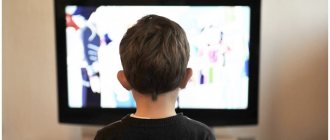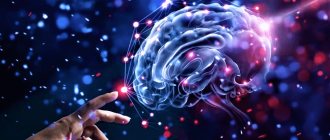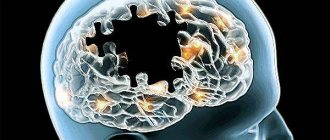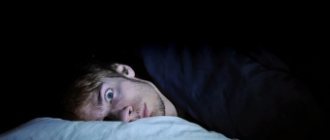Creativity is the ability of an individual to think outside the box. Make decisions, create something new and generate a lot of ideas.
Interestingly, the presence or absence of high intellectual abilities does not mean that a person is creative. The development of creative thinking occurs most effectively in childhood and adolescence.
Creativity is the ability to create something fundamentally new, deviating from traditional patterns and established systems of thinking. Such a person is able to solve a problem in a completely new way: by adding just one original detail or by completely changing the concept of decision-making.
Creative abilities
Creativity consists of a set of abilities. They allow you to clearly understand how creativity manifests itself and what is needed to develop it.
These abilities include:
Fluency
is the ability to generate a large number of ideas per unit of time. Allows you to quickly find many ways to solve a problem and determine the most suitable one.
Originality
- this is the ability to generate new, non-standard, extraordinary ideas that differ from the known or obvious. The better this ability is developed, the faster the psychological inertia that limits thinking to standard patterns and convinces of the unreality and uselessness of original ideas is overcome.
Flexibility
is the ability to use different methods to generate original ideas and quickly switch between methods and ideas.
Openness
- this is the ability, when solving a problem, to perceive new information from the outside for a long time, rather than using existing experience and not adhering to standard stereotypes.
Susceptibility
- this is the ability to find contradictions, unusual details, and uncertainty in an ordinary situation. Allows you to find the unusual in the ordinary, the simple in the complex.
Imagery
is the ability to generate ideas in the form of single, integral mental images.
Abstractness
is the ability to generate general, complex ideas based on specific, simple elements. Allows you to generalize and build a unified representation of a problem based on simple, unrelated knowledge and ideas.
Detail
is the ability to detail a problem until each element is understood. Allows you to break a problem into parts, analyze them until the essence of the problem, its smallest elements, becomes clear.
Verbality
- this is the process of breaking a single, figurative idea into separate words and highlighting the essential parts. Allows you to clarify the structure of the problem and the connections between its elements and exchange this information with others to jointly solve the problem.
Stress resistance
is the ability to act and generate ideas in a new, unusual, previously unknown environment.
Identifying these abilities in yourself and their conscious development can significantly increase the originality and usefulness of the ideas generated. This helps to increase success and speed up the process of realizing your purpose.
Skip the grades, but don't forget to think critically
There is absolutely no point in criticizing a child (“Are there really such elephants!”), much less comparing with others (“But Masha does much better!”). At the same time, meaningless praise (when you, without looking at the work, automatically say “Well done!”) also does not work.
The best option is to thoughtfully consider the work together. Find out what the child wanted to portray, discuss what turned out especially well, and together come up with further development of the plot.
Popular articles now
Nastya Kamenskikh never dreamed of it: young Latina Michelle Andrade excited the Network with hot photos
Positive’s new partner from “Time and Glass” was striking in her similarity to his wife
She cut her hair and made a stylish bob with bangs: 71-year-old Alla Pugacheva appeared in public without a wig for the first time in a long time (photo)
A sexy kitty went hunting: the wife of Pavel Volya from the Comedy Club could barely fit her ample bust into a tight blood-colored dress
Show more Paper crafts: creativity lessons for the whole family
The creative process and its stages
Creativity has a specific creative process
, repeated each time a unique result is obtained.
The essence of creativity
is to use personal talent and imagination to solve problems, achieve goals and realize purpose. The result of the creative process is a new, unique element that improves its creator or the environment and provides new possibilities.
The creative process consists of the following stages:
Preparation
A problem is formulated and the intention to solve it arises. Consciousness is filled with knowledge from all available sources (memory, books, magazines, Internet...). Hypotheses and assumptions are put forward. In a short period of time, an attempt is made to solve the problem based on the existing capabilities of consciousness.
Treatment
If the opportunities are not enough, then a temporary distraction is performed to another problem or matter. At this time, the solution to the problem is processed from consciousness to the subconscious. Subconscious processes begin to take place, invisible to humans and automatically generating new ideas until an acceptable solution to the problem is obtained.
Inspiration
After generating an idea that may possibly solve a problem, it is transferred from the subconscious to the conscious - inspiration appears. Usually this happens completely unexpectedly for consciousness and in completely random situations.
Grade
Having received an idea, the consciousness evaluates it for the possibility of using it to solve a problem. To do this, it analyzes and compares the idea with personal experience and determines whether it can be implemented under current environmental conditions.
Implementation
If no contradictions are found, then a decision is made to implement the idea. An implementation plan is formed and actual actions are carried out. The result is a tool, method, or technology that solves the original problem.
Examination
After implementing the idea and applying the result obtained, it is checked whether the problem is solved or not. Proof or refutation of the put forward hypotheses and assumptions is carried out. If the problem is not resolved, the process starts over. If the problem is solved, then the next problem is solved.
Space for creativity and experimentation
It doesn’t matter whether it’s a spacious room or a small corner. The child should have a special place for creativity. It is not at all difficult to equip it. You can put an easel, or you can simply attach a roll of drawing paper (large format) to the wall.
It’s wonderful to give your child a chance to “authorize” drawing on the walls. Wax pencils, plasticine, paints, brushes, colored paper, improvised materials (scraps of fabric, buttons, cereals, pasta) - here you have a basic set for creativity. You can make collages, draw pictures, build cities... And feel like you’re in a real artist’s workshop.
How to raise a creative child
Subconscious stage of the creative process
The processing stage occupies a special place in the creative process.
Problems.
Its peculiarity is that the solution to the problem is carried out absolutely unnoticed by a person by his special ability - the subconscious
.
As described in the Generating Useful Ideas method, the subconscious mind receives information simultaneously about all objects in the environment. This information is processed in parallel and unnoticed.
The subconscious process can be compared to a chemical reaction
: - molecules are in a certain space - they move and collide arbitrarily - as a result of collision, molecules can connect and new molecules are formed - or molecules can, on the contrary, separate into separate parts if internal connections were weak
Here are the starting molecules
is the knowledge that a person has.
The space
in which molecules move is the subconscious.
The connection of
molecules is the combination and synthesis of knowledge by the subconscious.
The result of
the connection is new ideas that are also used in synthesis.
When trying to solve a problem with consciousness
, it restores from memory existing knowledge that can help solve this problem.
If this knowledge is not enough, then the knowledge is transferred to the preconscious
, where it is combined.
But in the preconscious only knowledge transmitted from consciousness is used. If combining all this knowledge does not give an idea for solving a problem, then it is transferred to the subconscious
.
The subconscious connects to the consciousness of the supersystem - the superconscious
, possessing a huge amount of additional knowledge and ideas unknown to the system. Then, in the subconscious, knowledge and ideas transmitted from both the preconscious and the superconscious are combined and synthesized.
The generated ideas are not immediately transmitted to consciousness, but their “ strength”
". Those. when they are combined with other knowledge and ideas, contradictions are detected and the stability of connections between knowledge is checked. If no contradictions are found and internal connections are stable, then such an idea is identified as a useful combination and is transferred to consciousness for evaluation, implementation and verification.
If consciousness appreciated
idea as useless or impossible to solve the problem in the current conditions with the available capabilities, then it returns to the subconscious for re-combination.
And if the evaluation of the idea gives a positive result, then a decision is made to implement
. Then the subconscious process for solving this problem stops.
At some moments a person may feel
subconscious process. Then he “sees” how knowledge and ideas are mixed and new ideas arise. This occurs when a person is in a calm environment that does not require active consciousness, for example, before or after sleep.
It is under such conditions that combination occurs at maximum speed
and ideas are transmitted to consciousness faster. And when consciousness, on the contrary, is in increased activity and performs work unrelated to creative thinking, then ideas are generated very slowly.
This is why people in a state of creative thinking are called “ thoughtful.
". They seem to disconnect from the real world and move into their inner world of ideas. If at the same time a person performs some actions, for example, walking down the street or collecting things, then he may behave like a clumsy and absent-minded person.
Dear Guest, This is the Most Valuable Part of the Method!!!
To read it, TELL YOUR FRIENDS
about this page. Click on one of the social media buttons and add a post to your page. For a hint on how to do this, hover over the question mark under the buttons
Immediately after this, AMAZING TEXT
!
? ?
Internal mood
On the path to self-improvement, the most important thing is to believe in yourself. Try to look around: everything you have now is the result of your efforts. What role did you play in the lives of your loved ones, friends, acquaintances?
Only by realizing your uniqueness can you come to the conclusion that your ideas are truly meaningful. This will be the starting point for the development of creative abilities. The more ideas your brain generates, the faster you will unleash your creativity.
Another significant aspect in discovering your capabilities is your horizons. Studying new topics, areas of art, technology or cooking can be the impetus for new plans and projects.
Sections that were previously in the shadow of your attention can give inspiration in the most unexpected way and open the world from another, previously unknown side.
But it is not necessary to immediately try to conquer the mysterious expanses of neoclassical painting. Try to look at seemingly absolutely ordinary things from an innovative point of view. The same ones that we use every day, but to which we do not pay any attention.
How and where else can you use clothing items, dishes or posters? By coming up with at least one idea every day, the brain learns to look for a creative approach to any situation.
You need to learn to write down and sketch all your thoughts and ideas on paper. Electronic media may be suitable only for short-term recording of some idea that came at a time when there was no notepad at hand.
What is important here is not the recording itself, but the use of paper as a medium. With its help, it becomes possible not only to write down, but also to illustrate and structure information as it is presented in the head.
When we write by hand, our brain works slightly differently than when typing text; the departments responsible for better assimilation and further development of the received material are activated.
Problems of creativity
When performing creative activities, there are many problems and obstacles that must be overcome.
These include:
Lack of self esteem
. It manifests itself either in a lack of self-confidence and high self-criticism, or self-confidence or arrogance. This makes it difficult to take the first step to solve a problem and increases the risk of harm when implementing ideas. To overcome this obstacle, you need to develop self-confidence.
Laziness and weak will
. They also prevent you from starting the creative process and overcoming psychological inertia. To overcome them, you need to train self-discipline.
Fear of failure, failure
. This is a consequence of a lack of experience and the presence of uncertainty when providing impacts. Help or advice from a more experienced person, an expert who can give a correct assessment of the risks of the expected exposure, helps to overcome this obstacle.
Lack of organization
. Having too many things to do and ideas makes it difficult to understand which ones are important and need to be addressed first. To overcome this obstacle, you need to organize personal goals and affairs into a single reliable system. Such an organization will allow you to free your memory and consciousness from constant, repetitive thinking about these matters, which complicates the process of generating new ideas; it is better to use programs or web services for this, for example, Free online organizer, diary, to-do and task planner, calendar - Personal goals.
Lack of prioritization
. In the process of creative thinking, a large number of ideas are generated that need to be implemented. Some are very important and useful for solving the problem. They need to be implemented first. Others are less important and need to be put off until later, put in a queue. But most people don't define the importance of ideas - their priority. And they try to implement simpler, but less useful ideas. To overcome this obstacle, you need to learn to prioritize ideas, goals and activities.
Congestion of consciousness
. After filling the consciousness with all possible knowledge that can help solve the problem, it needs to be allowed to rest and relax. But very often this is not done and consciousness begins to be used to solve other problems. Increased mental congestion reduces the rate of idea generation. To overcome this obstacle, you need to consciously take breaks to speed up the creative process.
Conformism
. Accepting other people's opinions and experiences without criticism or analysis. This personality trait is characterized by agreement with everything that is in the environment, without assessing whether it is right or wrong, whether it is optimal or whether it can be improved. To overcome this obstacle, you need to develop critical thinking; you need to approach everything new with the questions “why, why, for what …”.
Impatience
. A person wants to find a solution to a problem immediately. But this requires a large amount of source material (knowledge, ideas) and a high level of intellectual development. But when a solution is not found in a short period of time, then the person simply stops working on this problem and switches to another, easier one. To overcome this obstacle, you need to train self-discipline, and especially perseverance.
Rigidity
. Firmness and steadfastness in the means used to make decisions and achieve goals. Limits a person from using new means that may be more effective and reliable. To overcome this obstacle, you need to develop flexibility of thinking, learn about the emergence of new tools and apply them to solve problems and achieve goals.
Removing all these obstacles is guaranteed to increase the efficiency and success of creative activity. This in turn will speed up the process of realizing your purpose.
Break the rules
Yes, a mouse can be purple, a hippopotamus can be tiny, and a fly can be huge. You are not raising a hyperrealist, but a child who can freely fantasize and express himself creatively. Breaking the rules, going beyond boundaries, is something we learn so desperately as adults.
Moreover, it is important to understand that all this is combined with the ability to acquire really necessary, “academic” skills (working correctly with perspective, mixing colors, and so on). Simply, firstly, you need to take into account the age of the child. Secondly, understand that in this case the process is much more important than the result.
By the way, one of the best ideas when playing LEGO is to put aside the ready-made diagrams and build something completely your own.
Types of creative output
As a result of creative activity, a new system is created or an existing system is improved. Based on their usefulness, these results are classified into the following types.
Opening
Discovery of a previously unknown law, system, feature or connection, confirmed experimentally. It has a revolutionary effect on the development of the system and changes existing goals and paradigms.
Invention
A means to solve a specific problem and achieve certain goals. It also allows you to perform certain actions more efficiently than using existing means, and has a fundamentally new structure.
Rationalization proposal
Improving the effectiveness of existing means of achieving goals without significantly changing their structure.
Regardless of the type of outcome, creativity creates new knowledge
, allowing you to solve similar problems and achieve similar goals in other areas.
The results also provide new ideas for creativity
to solve new problems and achieve new goals.
Tips for parents
You can start with daily tasks:
- prepare a new dish from ingredients available at home;
- brush your teeth or even write with your other hand;
- During the week, get to work in a new way each time;
- try activities that are unfamiliar to you, for example, take some courses;
- make an imaginary or real rearrangement of furniture in the apartment;
- solve various mental problems for adults. You can do most creative tasks together with your child, complementing his suggestions, thereby developing and at the same time enriching the child’s experience.
Consequences of performing creative activities
Putting creativity into practice can increase risk
causing harm. This happens because there is not enough experience using new, untested ideas and tools to solve a particular problem or achieve a goal. But with experience and the development of creativity, an understanding will come of which original ideas are useful and which are harmful.
Some people whose creativity developed unconsciously
, feel insecure and uncomfortable because of their non-standard creative thinking. It is important to explain to such people that they are very useful and point them in the right direction. In addition to developing creativity, they should also develop self-confidence.
With the development of creativity comes faith
the fact that any, even the most absurd and unrealistic idea, will help achieve a certain goal.
This belief is one of the motives pushing for the implementation of revolutionary ideas and the creation of new, huge systems that solve global problems. As Henry Ford said: “ You may believe that you can.
You may believe that you cannot. In both cases you are right ."
Many successful people claim that 30-50% success
Their projects and companies are brought precisely by creative, original ideas generated by themselves or specially hired professionals with well-developed creativity.
They also note a vicious circle - creativity gives new successes, and these, in turn, are a source of creativity and inspiration. This suggests that man and creativity
are a single whole, which cannot exist without each other.
Therefore, constantly devote personal time to developing creativity.
and your creative abilities. This will always have a beneficial effect on success. Do not stop engaging in creative activity, because it is the main means in realizing your destiny.
WANT TO KNOW EVEN MORE ABOUT THIS?
Then read the book
What is creativity? Definition of this concept in psychology and esotericism
Definition
In psychology, creativity is a kind of indicator of creative thinking.
In esotericism , creativity is solving problems using non-standard , new and unique methods. It characterizes the ability of our consciousness to create something new, to embody extraordinary ideas and the wildest dreams. Non-standard thinking is defined as - creative .
Creativity is influenced by the accumulated life experience of a person (the first stage of superconsciousness) and directly controls it. The accumulated experience also generates rules of behavior and assessment of events in the mind.
It is creativity, through accumulated experience, that helps a person make decisions and choose a strategy to achieve results.
Successful people admit that they owe many of their achievements to a creative approach to business.
100% achievement of results is subject to those who engage in their creativity and develop their consciousness.
Examples of tasks and games to develop creativity
- Tasks to resolve obvious contradictions (the closet should be both large and small; the chair should be both small and adults; the boat should be both narrow and wide).
- Game "Robinson Crusoe" (how to survive if you only have a million fishing rods; a thousand light bulbs; a hundred boxes of chewing gum).
- Game “Ideal Constructor” (we assemble from improvised means or only from round objects).
- Find commonality between objects, elements of the same system (arms and legs), homogeneous systems (tree and bush), different systems (light bulb and crocodile).
- Exercise “Fantastic addition and subtraction” (table + chair; house + wheels; chair – legs; house – wall).
- Isolating an object or part of it and placing it in an alien environment (monkey - to the north; fish - to a tree).
- Game “Conversation about a picture” (choose a picture with a complex plot with action and discuss what and why the people depicted in it are doing, what is missing to complete the plot).
- Exercise “What to do with...” (take any object, for example, a glass, and try to find as many options as possible for what can be done with it).
- Any type of creative activity and a combination of its different types (modeling, drawing, theatrical performance, etc.).
- Depiction of abstract phenomena (love; poverty; cry).
- Game “Crocodile” (one player depicts an animal, feeling, object using facial expressions and gestures, the rest try to guess).
To summarize, we emphasize that your main task is to awaken in the child, through creative tasks, an interest in new things, in knowledge. Be sure to draw his attention to the miracles that surround him: how amazing it is that birds fly, that flowers bloom, that some person can do something that many others cannot. And then the child himself will ask you to come up with and solve various problematic problems together with him, thereby stimulating the development of creativity of all family members. By observing what is happening around you, you will be able to pose new questions to your child: why the poles might have swayed, why the grass grows differently in different places, etc. – and in the process of practice, receive more and more answer options. This will develop the child’s attentiveness, teach him to work with various resources and find many possible solutions to problem situations. Our life offers us valuable and varied sources for the daily development of creativity. Take advantage of this opportunity and be amazed with your children!
Hypotheses about the origin of creativity
There are several hypotheses regarding the emergence of creative abilities. According to the first, it is believed that creative abilities arose in Homo sapiens gradually, over a long period of time, and were a consequence of cultural and demographic changes of mankind, in particular, population growth, by adding up the abilities of the most intelligent and gifted individuals in populations, with the subsequent consolidation of these properties in offspring. [ source not specified 3504 days
]
According to the second hypothesis, put forward in 2002 by anthropologist Richard Klein from Stanford University, the emergence of creativity was discontinuous. It arose as a result of a sudden genetic mutation about 50 thousand years ago[5].











